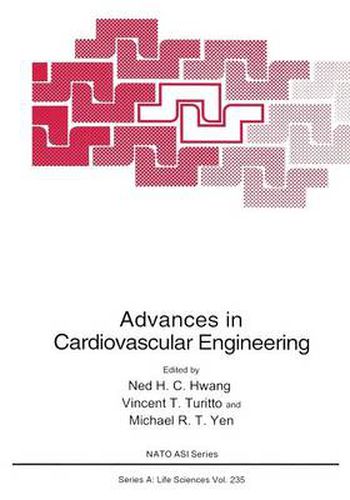Readings Newsletter
Become a Readings Member to make your shopping experience even easier.
Sign in or sign up for free!
You’re not far away from qualifying for FREE standard shipping within Australia
You’ve qualified for FREE standard shipping within Australia
The cart is loading…






This title is printed to order. This book may have been self-published. If so, we cannot guarantee the quality of the content. In the main most books will have gone through the editing process however some may not. We therefore suggest that you be aware of this before ordering this book. If in doubt check either the author or publisher’s details as we are unable to accept any returns unless they are faulty. Please contact us if you have any questions.
Advances of cardiovascular engineering prompt one to consider innovative device technology - that is, the development of new replacement heart valves or engineering of a totally implantable energy source for an artificial heart. However, these kinds of advances have often proved unable to achieve a long-lasting benefit as the cardiovascular field has matured so fast. Cardiovascular engineering has matured to the point where a major innovation must not only function, but must continuously function better than existing devices. This is difficult to accomplish in the complex cardiovasculature system, in which energy source, biocompatibility, compliance, and functionality all must be considered. The maturation of the field is evident from the fact that many engineered prosthetic systems perform well - for example, heart valves function for long periods of time, large-vessel vascular grafts are quite adequate, extracorporeal membrane oxygenation has significantly prolonged the feasible length of heart bypass and other surgical operations, and total artificial hearts can be used as a bridge to transplant without serious complications, yet none of these systems is as good as the natural ones it replaces. The reasons for this are many and incompletely understood. The next stage of progress must be better to alterations understandings of the various components of vasculature and their response by our devices, be they at the micro- or macro-circulatory levels, in the blood, or associated with the vascular wall.
$9.00 standard shipping within Australia
FREE standard shipping within Australia for orders over $100.00
Express & International shipping calculated at checkout
Stock availability can be subject to change without notice. We recommend calling the shop or contacting our online team to check availability of low stock items. Please see our Shopping Online page for more details.
This title is printed to order. This book may have been self-published. If so, we cannot guarantee the quality of the content. In the main most books will have gone through the editing process however some may not. We therefore suggest that you be aware of this before ordering this book. If in doubt check either the author or publisher’s details as we are unable to accept any returns unless they are faulty. Please contact us if you have any questions.
Advances of cardiovascular engineering prompt one to consider innovative device technology - that is, the development of new replacement heart valves or engineering of a totally implantable energy source for an artificial heart. However, these kinds of advances have often proved unable to achieve a long-lasting benefit as the cardiovascular field has matured so fast. Cardiovascular engineering has matured to the point where a major innovation must not only function, but must continuously function better than existing devices. This is difficult to accomplish in the complex cardiovasculature system, in which energy source, biocompatibility, compliance, and functionality all must be considered. The maturation of the field is evident from the fact that many engineered prosthetic systems perform well - for example, heart valves function for long periods of time, large-vessel vascular grafts are quite adequate, extracorporeal membrane oxygenation has significantly prolonged the feasible length of heart bypass and other surgical operations, and total artificial hearts can be used as a bridge to transplant without serious complications, yet none of these systems is as good as the natural ones it replaces. The reasons for this are many and incompletely understood. The next stage of progress must be better to alterations understandings of the various components of vasculature and their response by our devices, be they at the micro- or macro-circulatory levels, in the blood, or associated with the vascular wall.